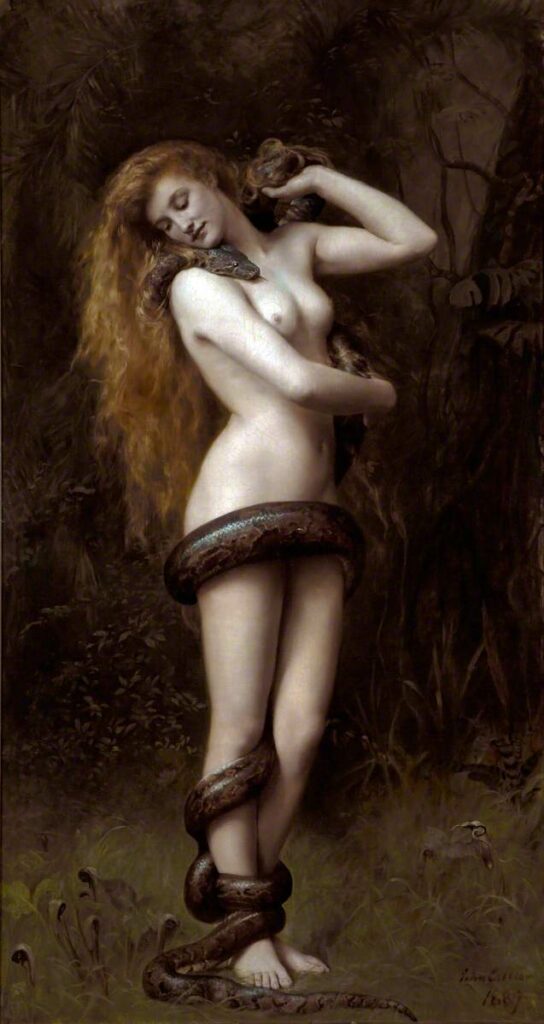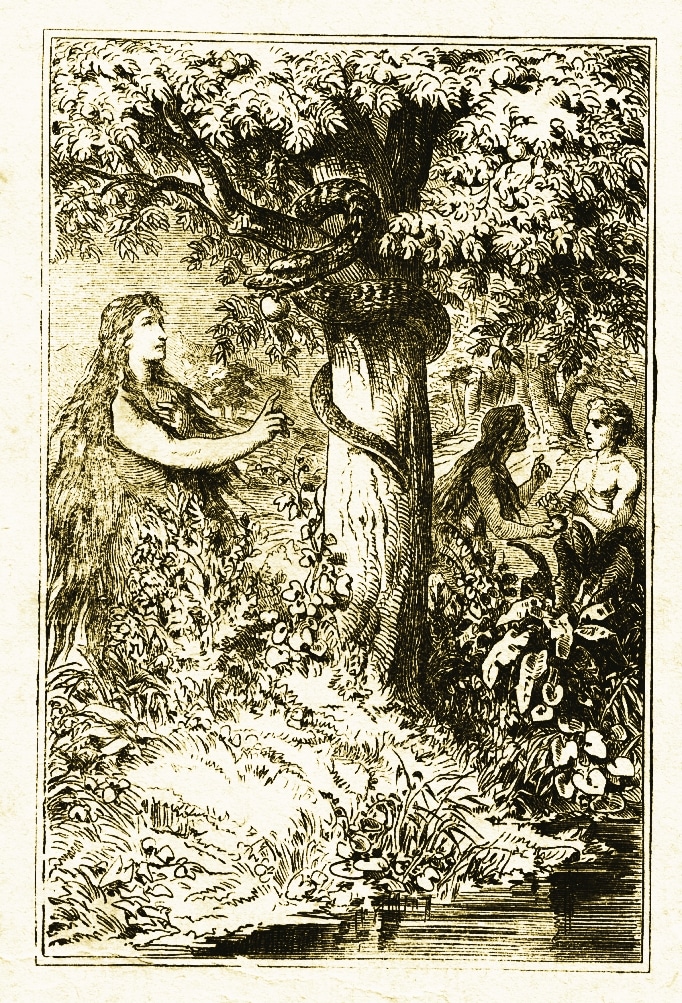Last updated on March 23rd, 2023 at 11:44 pm
The origin of Lilith, according to scholars, is highly debatable. Still, many think she was influenced by Mesopotamian or Sumerian mythology about succubae (female night demons) with the name “lilin” or by Sumerian myths about female vampires with the name “Lillu.”
Lilith is a highly contentious figure in Jewish folklore. Although certain midrashic texts mention Lilith by name, the Torah’s genesis story does not.
Her symbolism, history, and literature are topics of dispute among Jewish academics, feminists, and other intellectuals. Although Lilith has several origin stories, the one that is most frequently reported is that she was Adam’s first wife.

Existence of Lilith outside Jewish Folklore
For over 4,000 years, Lilith has appeared in myths across multiple civilizations.
Her sinister origins can be traced back to Babylonian demonology, where amulets and incantations were used to fend off the evil forces of an eagle-headed ghost that preyed on young children and expecting mothers.
The ancient Hittites, Egyptians, Israelites, and Greeks were the destinations of Lilith’s subsequent migration.
Mesopotamian and Sumerian mythology of Lilith
In the middle of the third millennium B.C., the Sumerians called Lilith “Lilitu.” Her image first surfaced during that time as a group of demons or spirits associated with storms and winds.
Some mythologists argue that the name was changed to Lilith around 700 BC. The inhabitants of Babylon, like those of Sumer, connected Lilith with evil spirits and demonic beings.
The Babylonians thought the female devil had both good and bad phases, using the moon to symbolize her.
As early as Babylonian demonology, Lilith can be found in Mesopotamian portrayals of Inanna’s demonic alter ego, “Lilith or Lilitu” (approximately 6th century B.C.). In prehistoric Sumerian society, Inanna was a significant deity.
She had power over women’s sexuality because she was the patroness of reproduction and sex, but Dumuzi was supposed to take over once they married.
Scholars believed that the demons Lilith, Ardat-Lili, and Irdu-kug were the evil counterparts of Inanna in these roles; it is from these passages that we derive our present conception of Lilith as a perilous succubus.
Lilith was identified with the image of a female night demon in Mesopotamian mythology. The eerie creature was associated with death, illness, and pests in this society since it represented the wind.
Lilith used water as a portal to connect with her world. Lilith is already viewed as a demon in Hebrew mythology, having references in the Midrash and Talmud.
In the Bible, she only made one appearance as a desert demon mentioned by the prophet Isaiah. In Jewish traditions from the Middle Ages, she is described as Adam’s terrible first wife in the Garden of Eden.
Lilith as the first wife of Adam in Eden
The character of Lilith is not connected to the original narrative of creation until the Alphabet of Ben Sira (c. 800 to 900), even though she is mentioned four times in the Babylonian Talmud.
The medieval author Ben Sira names Lilith as Adam’s first wife and provides a thorough account of her life. Going by the story of creation, there seem to be two distinct tales of how God made the first man and woman, at least on close inspection.

God created both man and woman at the same time in Genesis 1: “He created them male and female” (Gen. 1:27). But in Genesis 2, after creating Adam “from the dust of the earth,” God took a rib out of him to create Eve (Gen. 2: 21-22).
The first narrative is quite simple: “So God made people in his image, in his likeness; he formed them male and female” (Genesis 1:27).
According to the second story, after creating man from dust on the ground, God then made a woman from the man. It states, “Then the Lord God created man from the dust of the ground and breathed the breath of life into his nostrils, and the man became a living being.”
The Lord God’s involvement caused the man to enter a deep sleep. When the man awoke, the Lord God removed one of his ribs and filled the space with flesh.
And the Lord God made a woman out of the man’s excised rib and handed her to him (Genesis 2:7, 21–22).
Going by this part of the scriptures, the Alphabet of Ben Sira claims that Lilith was Adam’s first wife, although the two were often at odds.
Adam always wanted to be in charge, and Lilith also wanted a turn in the dominating sexual position (the man on top, the woman beneath).
Lilith decided to leave Adam after their issues became too much to bear. She said the name of God and took to the air, leaving Adam by himself in the Garden of Eden.
When she refused to return to her husband voluntarily, and after Adam’s plea to God that his wife left, God dispatched three angels (Senoi, Sansenoi, and Sammangelof) to pursue her and gave them orders to bring her back forcibly. However, when the angels discovered her at the Red Sea, they could not compel her to follow them or persuade her to return.
Eventually, a weird agreement is reached in which Lilith agrees not to harm infants if they are guarded by an amulet bearing the names of the three angels.
Lilith In Mythology
Lilith appears in several ancient mythologies, and in most manifestations of her myth, Lilith represents chaos, seduction, and ungodliness. Lilith has had a spell put on humanity in all of her guises.
After a series of awful and scary pictorial depictions of Lilith, legends later characterize her as a beautiful woman who seduces men or copulates with them in their sleep (a succubus), then spawns demon children.
According to some other accounts, Lilith is the Queen of Demons. In all, Lilith’s most widely known and believed existence is that which has her as Adam’s first wife in the garden of Eden.

